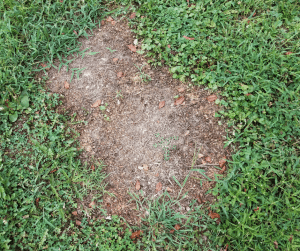
Introduction
Maintaining a beautiful lawn is a common goal for many homeowners in Australia. However, lawn disease care can be a major challenge to achieving this goal. Various factors such as climate, soil conditions, and lawn care practices can contribute to the development of lawn diseases. Below, we have some tips for lawn disease care to keep your lawn healthy, lush, and green!
Identifying the specific disease affecting your lawn is the first step towards proper treatment. Afterwards, you will need to take appropriate measures such as watering, mowing, fertilisation, aeration, and treatment with fungicides to help control and prevent the spread of lawn diseases. Ultimately, a proactive approach to lawn care can help prevent the development of lawn diseases and keep your lawn looking lush and healthy.
Common Types of Lawn Diseases
Dollar Spot
Dollar Spot is caused by a fungus called Sclerotinia homoeocarpa. The disease gets its name from the small, circular spots it creates on the lawn, which are about the size of a silver dollar. Dollar Spot can affect various grass types, including bentgrass, Bermuda grass, and fescue. It is most common during the summer months when the temperatures are warm, and the humidity is high but can occur at any time of the year.
The disease spreads through spores that are carried by the wind or lawn equipment. Preventing Dollar Spot requires proper lawn care practices such as avoiding overwatering, not mowing the lawn too short, and proper fertilisation. If Dollar Spot is already present in the lawn, treatment options include using fungicides, removing the affected grass, and reseeding with disease-resistant grass species. Proactive measures can help to prevent Dollar Spot and keep the lawn healthy and free from other common lawn diseases.

Brown Patch
Brown Patch is a fungal disease that commonly affects various types of grass in Australia, particularly during hot and humid weather conditions in the summer. The fungus responsible for Brown Patch is called Rhizoctonia solani, and it can survive in the soil for extended periods, making it difficult to eliminate. The disease is spread by spores that can be carried by wind, rain, or lawn equipment, and poor lawn care practices such as over-fertilization, overwatering, or mowing the lawn too short can contribute to its development.
Symptoms of Brown Patch include circular or irregular patches of dead or dying grass with a brown or tan colour. To prevent the disease, it is recommended to practice proper lawn care such as deep and infrequent watering and regular mowing to avoid creating conditions that promote fungal growth. Fungicides can be used to control Brown Patch but should only be applied when necessary and according to the manufacturer's instructions. Regular monitoring and timely intervention can help to maintain a healthy lawn, free from Brown Patch and other common lawn diseases.

Fusarium Patch
Fusarium Patch, also known as Microdochium Patch, is a fungal disease that commonly affects grass in Australia, especially during the winter and early spring months. The disease is caused by the fungus Microdochium nivale and is characterized by circular or irregularly-shaped patches of reddish-brown, dead or dying grass. The fungus typically attacks the leaves of the grass, causing them to become thin and appear bleached before dying off.
Fusarium Patch spreads through spores that are carried by the wind or lawn equipment. and can be worsened by poor lawn care practices, such as over-fertilization, overwatering, or mowing the lawn too short. Preventing the disease requires proper lawn care practices, including watering the lawn deeply but infrequently, regular mowing without cutting too short, and applying fungicides when necessary and according to the manufacturer's instructions.

Pythium Blight
Pythium blight is a fungal disease that frequently affects grass in Australia, usually during summer months. The fungus responsible for the disease is called Pythium aphanidermatum, and it can damage several types of grass, including Bermuda grass, fescue, and ryegrass. The disease is identifiable by light brown or grey, circular, or irregular patches of dead grass.
The fungus typically attacks the leaves of the grass, which become slimy and water-soaked before wilting and dying off. Pythium blight spreads through spores that are carried by wind or lawn equipment. Overwatering and watering during the night can exacerbate the disease's development and spread. Lawn care practices such as deep and infrequent watering during the morning hours and regular mowing, without mowing too short, can prevent Pythium blight.
Fungicides can also be used to control the disease, when necessary, but they should be used according to the manufacturer's instructions. Proper lawn care can help prevent Pythium blight and other common lawn diseases. Regular monitoring of your lawn's health, taking timely measures to prevent the spread of the disease, and implementing appropriate lawn care practices can help keep your lawn healthy and free from Pythium blight and other common lawn diseases.

These are some of the common lawn diseases in Australia. If you notice any patterns in the spots that appear on your lawn or see other similar-looking spots starting to appear, contact the top lawn disease experts, Coochie HydroGreen right away so that they can correctly diagnose the problem.